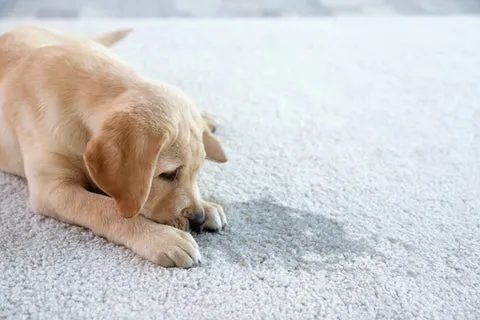Establishing a consistent potty routine is a cornerstone of responsible dog ownership, ensuring both a clean home and a happy, well-adjusted pet. For many dog owners, the challenge lies in encouraging their furry friends to use specific, designated areas outside. Understanding what appeals to dogs for urination can transform haphazard outdoor accidents into predictable potty breaks. This guide explores effective strategies and ideal “Things For Dogs To Pee On Outside” to help you create a successful and tidy outdoor relief zone for your dog. For puppies, it’s crucial to know [when to start potty training a puppy outside](https://dogcarestory.com/when-to-start-potty-training-a-puppy-outside/) to lay a strong foundation.
Understanding Your Dog’s Potty Preferences
Dogs are creatures of habit and often prefer certain textures and smells when choosing a spot to relieve themselves. Instinctively, they may seek out areas that absorb urine well and allow them to mark their territory effectively. Creating a “potty zone” that caters to these natural instincts can significantly improve your dog’s outdoor habits. Consistency, along with positive reinforcement, is key to reinforcing good behavior.
Natural Surfaces Dogs Prefer for Outdoor Relief
Many dogs naturally gravitate towards certain outdoor surfaces. These can include:
- Grass: This is the most common and often preferred surface. Its absorbent nature and natural scent make it an ideal spot for most dogs. If you have a lawn, consider designating a specific patch for potty breaks to protect the rest of your landscaping.
- Dirt/Soil: Similar to grass, loose dirt or soil provides a natural and appealing area for dogs to relieve themselves. This can be a good alternative if grass isn’t readily available or if your dog prefers a softer surface.
- Pine Straw/Mulch: These materials can be excellent choices for a designated potty area, as they are absorbent and can help manage odors. They also provide a clear boundary for the potty zone.
Dedicated Potty Solutions for Your Outdoor Space
Beyond natural surfaces, several dedicated solutions can help guide your dog to a specific outdoor spot.
Artificial Grass Pads / Dog Potty Areas
For those with limited yard space, balconies, or a desire for a highly controlled potty area, artificial grass pads designed for dogs are an excellent option. These come in various sizes and offer a consistent texture that many dogs find appealing. They are generally easy to clean, though regular maintenance is essential to prevent odors.
 Dog relieving itself on an artificial grass potty pad in a backyard
Dog relieving itself on an artificial grass potty pad in a backyard
Vertical “Pee Posts” or Scent Markers
Especially for male dogs, vertical objects serve as natural targets for marking. You can purchase commercial “pee posts” that emit a scent designed to attract dogs, or even use a small, sturdy garden stake. Placing these within your designated potty area can encourage your dog to use that specific spot.
Encouraging Your Dog to Use Designated Outdoor Spots
Positive reinforcement is paramount. When your dog successfully uses the designated area, offer immediate praise, a treat, and perhaps a quick playtime reward. Establishing a routine of taking your dog to the same spot at consistent times—first thing in the morning, after meals, before bed—will help solidify the habit. Incorporating training commands like [how to teach your puppy to stay](https://dogcarestory.com/how-to-teach-your-puppy-to-stay/) during potty breaks can also help maintain focus and patience. If your dog tends to pull on the leash during walks, mastering [teach your dog to stop pulling on the leash](https://dogcarestory.com/teach-your-dog-to-stop-pulling-on-the-leash/) can make these trips more manageable and focused on the task at hand.
Addressing Accidents and Unwanted Outdoor Potty Spots
Even with the best intentions, accidents can happen. When they do, thorough cleaning is essential to eliminate residual odors that might attract your dog back to the same undesired spot. For outdoor areas like patios or concrete, an enzyme-based cleaner is highly effective at breaking down urine at the source, unlike masking agents. Similarly, to deter your dog from peeing on garden beds or specific plants, you can strategically place natural repellents like vinegar or coffee grounds, as dogs generally dislike strong, acidic smells.
Conclusion
Creating an inviting and consistent outdoor potty area is a vital step in dog training and maintaining a clean environment. By understanding your dog’s natural preferences for surfaces like grass or dirt, and by utilizing dedicated solutions like artificial grass pads or pee posts, you can effectively guide them to relieve themselves in appropriate “things for dogs to pee on outside.” Remember that patience, consistency, and positive reinforcement are your most powerful tools. With these strategies, you can foster excellent potty habits, leading to a happier dog and a more pleasant outdoor space for everyone.
